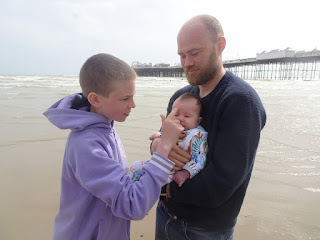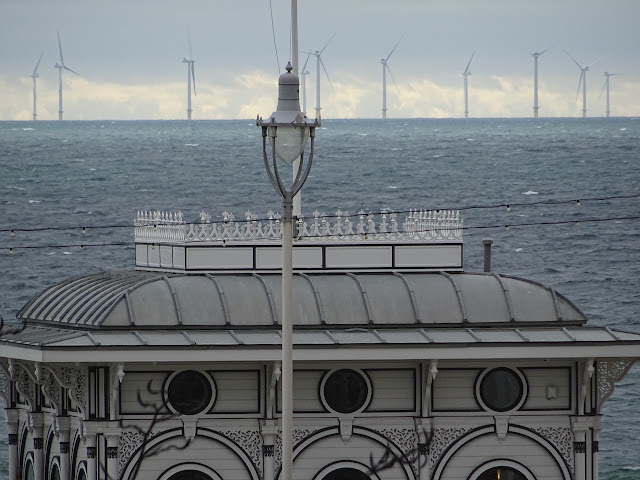This day seven years ago, Century published Dorothy Koomson’s The Brighton Mermaid. Said to be a gripping thriller, it follows the story of teenagers Nell and Jude who find the body of an unidentified young woman on Brighton beach. On her right arm is the tattoo of a mermaid, and below it are etched the words ‘I am Brighton’. The narrative shifts between past and present as Nell tries to uncover the truth about her death and the disappearance of Jude 25 years later.
Koomson is a Brighton-based British novelist and journalist, widely regarded as one of the UK’s most successful Black authors of adult fiction, with her books translated into over 30 languages and sales exceeding 2.5 million copies in the UK alone. Born in London to Ghanaian parents, she wrote her first novel at age 13 and later earned degrees in psychology and journalism from Leeds University. She began her professional writing career in women’s magazines before publishing her debut novel,
The Cupid Effect, in 2003. Her third novel,
My Best Friend’s Girl, became a major bestseller, and
The Ice Cream Girls was adapted into a successful television drama.
The Brighton Mermaid - first published on 17 May 2018 - is said to be fast-paced and thrilling, and to explore ‘the deadly secrets of those closest to you’. Here is the moment, right at the start of the book, Nell is narrating, when the reader is first taken on to Brighton beach. It is 1993.
‘From the promenade, I’d spotted her down on the beach, the light of the almost full moon shining down on her, and said we should check to see if she was all right. Jude had wanted us to keep going, getting back to her house after we’d sneaked out was going to be tricky enough without getting back even later than 3 a.m., which was the time now. But I’d insisted we check. What if she’d twisted her ankle and couldn’t get up? How would we feel, leaving someone who was hurt alone like that? What if she’s drunk and has fallen asleep on the beach when the tide was out and is now too drunk to wake up and pull herself out of the water? How would we live with ourselves if we read in the paper in the morning that she’d been washed out to sea and had drowned?
Jude had rolled her eyes at me, had reminded me in an angry whisper that even though our mums were at work (they were both nurses on night duty), her dad was at home asleep and could wake up any minute now to find us gone. He’d call my dad and then we’d be for it. She’d grumbled this while going towards the stone steps that led to the beach. She was all talk, was Jude - she wouldn’t want to leave someone who was hurt, she would want to help as much as I did. It wasn’t until we’d got nearer, close enough to be able to count the breaths that weren’t going in and out of her chest, that we could to see what the real situation was. And I said that thing about her being asleep.
‘I’ll go up to the . . . I’ll go and call the police,’ Jude said. She didn’t even give me a chance to say I would do it before she was gone - crunching the pebbles underfoot as she tried to get away as fast as possible.
Alone, I felt foolish and scared at the same time. This wasn’t meant to turn out this way. We were meant to come to the beach and help a drunk lady and then sneak back to Jude’s house. I wasn’t supposed to be standing next to someone who was asleep but not.
She must be cold, I thought suddenly. Her vest top was soaked through and stuck to her body like a second, clingy skin; her denim skirt, which didn’t quite reach down to her knees, was also wringing wet. ‘I wish I had a blanket that I could pull over you,’ I silently said to her. ‘If I had a blanket, I’d do my best to keep you warm.’
It was summer, but not that warm. I wasn’t sure why she was only wearing a vest, skirt and no shoes. Maybe, I thought, her shoes and jumper have already been washed out to sea.
I leant forwards to have another look at her. I wanted to make her feel more comfortable, to move her head from resting on her left arm at an awkward angle, and stop her face from being pushed into the dozens and dozens of bracelets she wore on her arm. Thin metal ones, bright plastic ones, wood ones, black rubbery ones, they stretched from her wrist to her elbow, some of them not visible because of where her head rested. I wanted to gently move her head off her arm and lay it instead on my�rolled-up jacket. I didn’t dare touch her though. I didn’t dare move any nearer, let alone touch her.
Her other arm, the right one, was thrown out to one side, as if it had flopped there when she’d finally fallen asleep. That arm had only one slender silver charm bracelet, hung with lots of little silver figures. That arm’s real decoration, though, was an elegant and detailed tattoo of a mermaid. My eyes wouldn’t leave the tattoo, which was so clear in the moonlight. Usually when I saw tattoos they were a faded greeny-blue, etched into peach or white skin, but this one was on a girl with the same shade skin as me. Deep black ink had artistically been used to stain and adorn most of her inner forearm. I leant a little more forwards, not wanting to get too close, but fascinated enough to want to have a better look. It was truly beautiful, so incredibly detailed it looked like it had been carefully inscribed onto paper, not rendered on skin.
I could see every curl of the mermaid’s short, black Afro hair; I could make out the tiny squares of light in her pupils; I could count every one of the individually etched scales on her tail, and I could see droplets of water glistening on the bodice, shaped of green seaweed, that covered her torso. The mermaid sat on a craggy grey rock, her hands demurely crossed in her lap, smiling at anyone who cared to look at her.
I couldn’t stop staring at her. She was mythical, she was a picture, but she was also like a siren at whom I couldn’t stop staring. In the waters beneath the mermaid’s rock, there were three words in a swirling, watery script: ‘I am Brighton’.















































